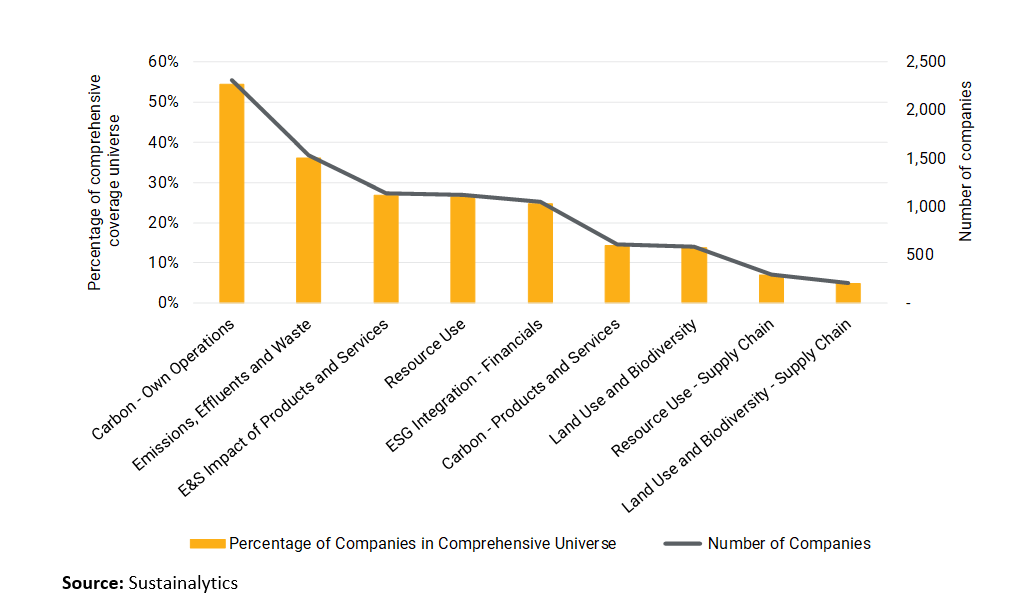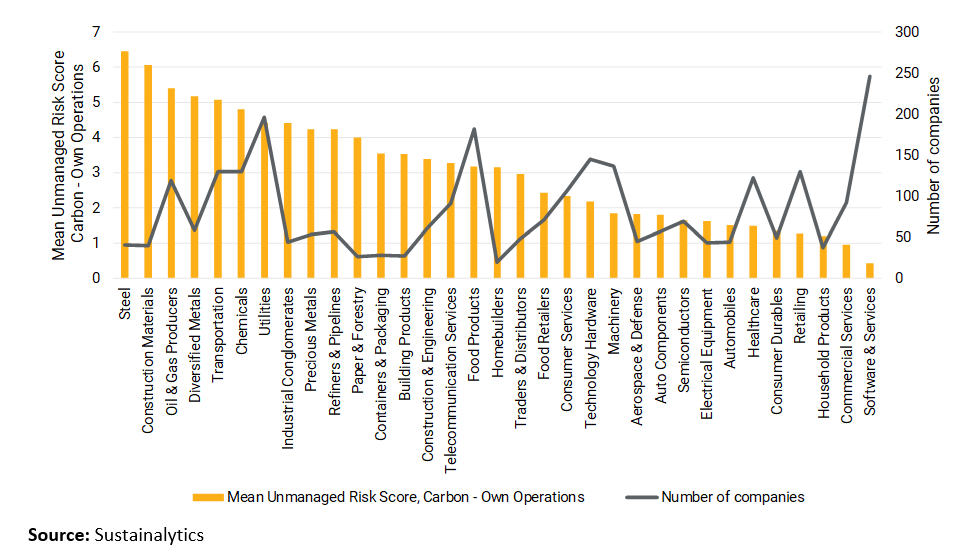This year, we mark Earth Day under a pandemic. To date, casualties of the novel coronavirus include more than 170,000 deaths, ongoing disruptions to healthcare systems and a deep economic downturn. As we face the first global recession in a decade, Earth Day – the theme of which this year is climate action – serves as a reminder for investors to reflect on how their investment activities relate to social and environmental health concerns.
In this post, we explore the relationship between climate action and COVID-19. We highlight environmental, social and governance (ESG) issues for investors to consider when assessing portfolio exposure to risks at the intersection of environmental sustainability and human health, including climate change, deforestation and pollution.
Climate change and human health
The COVID-19 health crisis illustrates the interdependence of ecological sustainability, social health and economic prosperity. Almost 70% of human infectious diseases, including AIDS, H1N1 flu and COVID-19, originate from wild animals, which have more contact with humans when their natural habitats are destroyed by human activities directly through deforestation and pollution, or indirectly through climate change.[i] Floods, wildfires and droughts associated with climate change also intensify food insecurity, which exacerbated the 2014 Ebola outbreak in West Africa.[ii] In the words of Inger Andersen, head of the UN Environment Programme, “a healthy planet means fewer diseases.”[iii]
The Intergovernmental Panel on Climate Change (IPCC) reports with high confidence that an increase in global average temperatures of as little as 0.5°C will affect human health negatively. Beyond heat-related illnesses and those associated with poor air quality, increasing emissions and temperatures amplify risks of some human illnesses caused by parasites, viruses and bacteria, including malaria, dengue fever and Lyme disease. The IPCC projects global warming to intensify various climate-sensitive infectious diseases and to alter their geographic range, seasonality and transmission intensity.[iv]
Economic shutdowns and global emissions
Although widespread economic shutdowns have resulted in a temporary lessening of anthropogenic emissions, the long-term impacts of COVID-19 have yet to be determined. Greenhouse gas emissions and air pollution have decreased wherever the response to the pandemic limits travel and production. Researchers at New York University found that the concentration of carbon monoxide, mainly due to car exhaust, dropped by almost 50% in cities affected by the virus.[v] In China, the slowdown or shutdown of thermal power plants and factories combined with the ban on travel for tens of millions of citizens resulted in significantly lower CO2 and NOx emissions compared to 2019.[vi] From India’s Himalayan peaks, which are visible in places for the first time in 30 years, to the clear water of Venice, a temporary reduction of pressure on the environment is apparent.[vii
Still, major environmental challenges persist. An early, tentative estimate pegs the global carbon emissions decline due to COVID-19 to be equivalent to about 5.5% of the global total for 2019,[viii] whereas keeping temperatures within the range of a 1.5°C rise relative to the preindustrial benchmark would require that emissions be reduced by 7.6% for each year in this decade.[ix]
Shifting priorities in response to the outbreak have led some environmental agendas to take a backseat. For example, the US Environmental Protection Agency (EPA) announced that it would temporarily relax enforcement laws requiring routine monitoring and reporting of pollution, as long as polluters can claim violations were caused by the COVID-19 pandemic.[x] On the other hand, in the EU discussions over an economic recovery package are taking place and Ursula von der Leyen, president of the European Commission, has called for the European Green Deal to play a role in making a resilient recovery from COVID-19.[xi]
Relevant themes for responsible investing
The equities market has been hit particularly hard by the pandemic, with the Dow Jones Industrial Average and S&P 500 posting Q1 2020 as their worst first quarter ever.[xii] As demand for oil plunged with the slowdown of industrial activities and transportation, oil prices collapsed, leading OPEC, Russia and other oil-producing nations to announce a reduction to global supplies of 10%, the biggest oil output cut in history.[xiii] Oil futures are now trading in unprecedented negative territory, meaning sellers have to pay buyers to take oil futures.[xiv]
Moving forward from the pandemic, investors may wish to consider rebalancing their portfolios with the aim of creating long-term value, investment resilience and macroeconomic stability in part by prioritizing ecological sustainability in their decision-making processes. As a component of their assessments, investors can gauge their exposure to a range of material ESG issues (MEIs).
Carbon risks are among the most prominent environmental issues presenting risk exposure to companies in the public equities market. As shown in Exhibit 1, more than half (2,313 of 4249, or 54%) of the companies in Sustainalytics’ comprehensive ESG Risk Ratings universe are exposed to the MEI, Carbon – Own Operations. Other environmental issues that present risks to a large portion of the market include Emissions, Effluents and Waste (36%), Environmental and Social (E&S) Impacts of Products and Services (27%), and Resource Use (27%).
Exhibit 1: MATERIAL ESG ISSUE (MEI) EXPOSURE, SELECT ENVIRONMENTAL ISSUES SHOWN

Carbon – Own Operations is applicable to 33 of 42 peer groups, with the highest levels of unmanaged risk among companies in the Steel, Construction Materials and Oil & Gas Producers industries, as shown in Exhibit 2. Investors looking to mitigate carbon risks may wish to prioritise their assessments of companies in these segments.
EXHIBIT 2: MEAN UNMANAGED RISK SCORE, CARBON - OWN OPERATIONS AMONG 33 EXPOSED INDUSTRIES

As detailed in our recent report, 10 for 2020: Creating Impact Through Thematic Investing, investors looking to contribute to the UN Sustainable Development Goals (SDGs), including Climate Action, Good Health and Well-Being, and Sustainable Cities and Communities, can draw on MEI analysis in their analysis of the risks and opportunities presented by investable companies. The analysis presented here may serve as an early step in this process.
Lessons of an unnatural experiment
To a large extent, the Covid-19 pandemic has revealed a lack of institutional preparedness in the face of a global crisis. However, it has also demonstrated the possibility of putting aside differences and taking collective measures to mitigate risks to human health. Climate change, deforestation and pollution are among the most pressing risks to the health of our planet and the economy. This Earth Day represents an opportunity for responsible investors to renew their efforts to limit environmental risks, support sustainable solutions and promote global health.
Sources:
[i] https://www.cdc.gov/onehealth/basics/zoonotic-diseases.html; https://19january2017snapshot.epa.gov/climate-impacts/climate-impacts-ecosystems_.html;
[ii] https://blogs.ei.columbia.edu/2014/09/04/how-climate-change-is-exacerbating-the-spread-of-disease/
[iii] https://news.un.org/en/story/2020/04/1061082
[iv] https://www.ipcc.ch/sr15/
[v] https://www.wsj.com/articles/coronavirus-got-rid-of-smog-can-electric-cars-do-so-permanently-11586532988
[vi] https://www.theguardian.com/environment/2020/mar/23/coronavirus-pandemic-leading-to-huge-drop-in-air-pollution
[vii]https://edition.cnn.com/travel/article/himalayas-visible-lockdown-india-scli-intl/index.html; https://www.theguardian.com/environment/2020/mar/20/nature-is-taking-back-venice-wildlife-returns-to-tourist-free-city
[viii] https://www.carbonbrief.org/analysis-coronavirus-set-to-cause-largest-ever-annual-fall-in-co2-emissions;
[ix] https://unfccc.int/news/cut-global-emissions-by-76-percent-every-year-for-next-decade-to-meet-15degc-paris-target-un-report
[x] https://www.theguardian.com/environment/2020/mar/27/trump-pollution-laws-epa-allows-companies-pollute-without-penalty-during-coronavirus; https://www.nytimes.com/2020/01/22/climate/trump-environment-water.html
[xi] https://eeas.europa.eu/delegations/china/77729/coronavirus-president-von-der-leyen-outlines-eu-budget-marshall-plan-europes-recovery_en; https://www.europarl.europa.eu/news/en/press-room/20200415IPR77109/covid-19-meps-call-for-massive-recovery-package-and-coronavirus-solidarity-fund
[xii] https://www.cnbc.com/2020/03/31/stock-market-today-live.html
[xiii] https://www.reuters.com/article/us-global-oil-opec/opec-russia-approve-biggest-ever-oil-cut-to-support-prices-amid-coronavirus-pandemic-idUSKCN21U0J6
[xiv] https://business.financialpost.com/commodities/energy/oil-drops-to-21-year-low-with-storage-filling-as-demand-shrivels





